Victor Lustig, King of the Con
Victor Lustig was a Bohemian, both in the colloquial and the literal sense. He was born in Bohemia (a former independent kingdom nowadays part of the Czech Republic) in 1890, under the name of Robert Miller. [1] But the word Bohemian has another meaning, one which came from the French word for the Romani people: bohémien. [2] In that sense the word also fits Victor, to an extent. He never settled, and lived his life on the road. In English, the word became associated with the scruffy creative class of Paris – artists and actors, living on the fringes of society and driven by their need to perform or create. It’s this last definition that may fit Victor best.
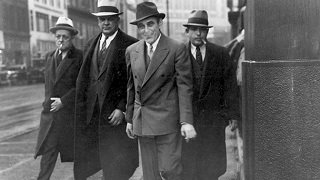
The Millers were an upper middle class family, or so Victor told it later. He said his father was a small town mayor, and it seems true he was definitely well enough to send his son off to university in Paris. There he spent little time on his studies, instead spending his time gambling and having fun. One man thought that Victor was having a little too much fun with his girlfriend, an opinion which left the nineteen year old student with a scar on the left side of his face for the rest of his life. Apart from that, the main things he gained from his university life were a good grounding in French, Italian and English (in addition to his native German and Czech), and a certainty that life within the boundaries of society was not for him.
This was the period of the Belle Epoque, the golden age before the First World War. With flight not yet an option, most people travelled between Europe and America by cruise ship, and Victor found these a fertile ground for him to harvest a fortune from the rest of society. It was at this time that he took on the fictional name and identity of Victor Lustig, a nobleman from the fallen kingdom of Bohemia. During these trips he met Nicky Arnstein, an American professional gambler and con artist who would become famous in the 1920s for marrying the actress Fanny Brice. Nicky, so Victor later claimed, was the one who taught him the art of the con.
The conman’s trade, as Victor later explained it, involved following some broad rules. The key to gaining a mark’s trust lay in listening to them talk, but never looking bored. Letting them first state their opinions on politics or religion, and then agreeing with them. Never boast and never pry – just let your importance be implicit and let them confide in you. Hint at an openness to sexual overtures, but let them make the first move. And above all, never get drunk and never get sloppy. It was with these rules in mind that Victor persuaded the rich set on the cruise liners to buy into his scams. Though Victor never went into detail on his exploits at this time, he did well enough to make scamming his full time career.
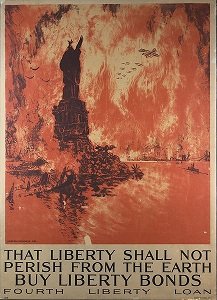
Victor was equally tight-lipped about what he did when the First World War came along and put an end to pleasure cruises for the rich and foolish. There’s always money to be made in wartime, but people tend not to like to hear about how it’s done. In fact, the first known exploit of Victor after the war took place in 1922, in Missouri. Under the name of Robert Duval [3] he contacted the American Savings bank and offered them $22,000 in World War I war bonds (known as Liberty bonds) for the ranch. Of course, Victor had no interest in something as immobile as farmland. The real sting was in the side deal, where he sold them an additional $10,000 in bonds for cash, to cover his “operating expenses”. The bonds were genuine, raising interesting questions as to how Victor got hold of $32,000 worth of them. And kept hold of them – when he handed them over in exchange for the cash and deeds, he switched envelopes and left the bank holding nothing. The really impressive part was still to come, though. The bank hired private detectives to track him, and they did. (Some reports have it that he was in Kansas City when they tracked him down, others say New York.) Once captured, Victor convinced them that if they pressed charges it would lead to a loss of confidence in the bank and a run that would ruin them. Not only did he convince the bank to drop all the charges, he somehow managed to get an extra $1000 out of them in exchange for keeping silent.
Victor next popped up in Montreal, some time in the early 1920s. There he gained the confidence of a banker named Linus Merton by having someone pick his pocket and steal his wallet. Victor then turned up on his doorstep with the wallet, contents intact, claiming to have found it on the street. Impressed by his honesty, Merton invited him in. Once he’d established a friendship, Victor told Merton about a scheme he had going. Victor said that he had a cousin named Emil, working at a local bookies. Emil had placed a tap on the telegraph wire delivering the results of the races, and was able to relay the results a vital minute before the official result arrived. However he and Victor lacked the capital to exploit this – which is where Merton came in. They let him test the waters with a few small bets, which he won, but then Emil told him that he needed to leave town. Burning his bridges, Merton placed one last huge bet for $30,000. Emil took the money, and that was the last Merton saw of him, or of Victor. Merton was even unable to go to the police, since he had been trying to break the law and Victor got away scot-free. He headed to France, where he carried out the career-defining con that made him “The Man Who Sold The Eiffel Tower”.
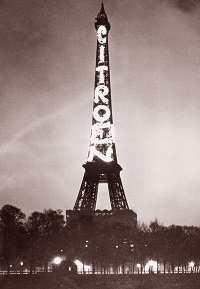
Now this wasn’t quite as crazy as it sounds to modern ears. The Eiffel Tower had been built in 1889 for the Paris World’s Fair, and originally hadn’t been intended to be a permanent fixture. In fact at the time it faced a huge amount of protest from artists and city dwellers who thought of it as a huge eyesore. During World War I it had been rebranded as a symbol of the city and a sign of Parisian pride, but the reality in the 1920s was that it was costing the city a huge amount in deferred maintenance, now they’d decided to keep it. Victor’s story was that they weren’t able to keep it, but were keeping the decision secret in order to defer public outcry until they had all the pieces in place. One such piece was disposing of the huge amount of metal demolishing the tower would leave behind, or so was the story he told five of the city’s premier scrap metal dealers (all sworn to secrecy, of course). Victor managed to arrange a surreptitious guided tour of the tower for the dealers, which established his credibility. All the dealers put in bids. André Poisson may not have bid the highest, but Victor decided he was the easiest mark among the lot and told him that he had. In a touch of genius, Victor even got Poisson to bribe him in order to secure the deal. Once Poisson had made the payment, Victor and his accomplices fled to Austria, where they watched the papers for news of Poisson realising he’d been had. When no such news emerged, Victor realised that Poisson had been too embarrassed to go to the police and had written the loss off rather than face the shame of being conned. This was great news for Victor, as he was able to go back to Paris and run the exact same scam with a different group of dealers. The second time around the scam was rumbled though, and Victor was forced to flee Europe.
Another of Victor’s most famous cons was when he set out to fleece one of the most dangerous men in America, the Chicago mob boss Al Capone. Capone was a violent and somewhat unpredictable man, but Victor was undaunted. He persuaded the gangster to invest $50,000 dollars in an investment scheme. After two months he returned and told Capone that the scheme had failed, and then refunded his $50,000. Capone was so impressed that this infamous conman would play it straight with him that he insisted that Victor keep $1,000 of the money. Of course, Victor had simply put the money into a bank account and left it there for two months. Possibly this was with the hope of securing a gift like this, or possibly it was simply a way to gain some credibility in the American criminal underworld. Credibility he soon put to use.
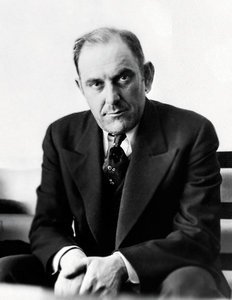
In the early 1930s Victor got into the counterfeiting game. He formed an alliance with a chemist from Nebraska named Tom Shaw and a genius engraver named William Watts. Shaw was able to duplicate the printing process, Watts made the plates, and Victor handled distribution. This he did by using his real name of Robert Miller as an alias, since he’d never used it in America. The gang were wildly successful – too successful, as it turned out. They produced over a million dollars in counterfeit bills, and at one stage the banks in New York estimated they were finding over $100,000 in fake money a month. The Secret Service set up a special task force with one goal, to take down the counterfeiters. They soon discover it was Lustig behind it, but they were unable to track him down. Then in May 1935 they received an anonymous tip off, reputedly from his mistress after she found out he had cheated on her. She pointed them to his hotel in New York, and the agents arrested him on the street outside it. He had grown a moustache and altered his appearance such that the agents weren’t even sure they had the right man. A key in his pocket turned out to be for a locker in the Times Square subway station, where he had stashed some of the plates and chemicals his gang had been using. One of the agents admiringly told Victor that he must be the smoothest conmen in the world. Victor shook his head.
I wouldn’t say that. After all, you have conned me.
Victor was locked up in the Federal House of Detention in New York City, a building the governor proudly touted as escape-proof. Naturally, the day before his trial the guards checked Victor’s cell and found that he had vanished. He had stolen enough bedsheets (which he realised weren’t counted) to fashion a rope, and stolen a pair of wirecutters. These he used to cut through the screen in a washroom and get out of a window, where he distracted spectators by pretending to be a window cleaner. It was a daring and audacious escape, but it was all for nothing as he was recaptured less than a month later in Pittsburgh.
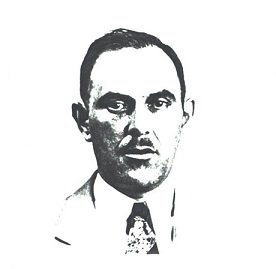
Victor initially pleaded not guilty, but William Watts had also been captured in September. Watts turned states’ evidence, and his testimony against Victor was damning. [4] Midway through the trial, Victor changed his plea to guilty. He was sentenced to 20 years in prison, and sent to Alcatraz Island. In the end he served less than 12 – he died in 1947, of either a brain tumour or of complications from pneumonia. Either way, it was an ignominious end for the one-time King of the Con Men.
Images via wikimedia except where stated.
[1] Or so he’d have us believe, at any rate. When you’re dealing with a professional liar, it may be prudent to take this – and almost everything else in this article, to be honest – with a larger than usual pinch of salt.
[2] The etymology is uncertain, but it’s at least probably more accurate than the English calling them “Egyptians”.
[3] A sheer coincidence, as the Oscar-winning actor of the same name wouldn’t be born for another nine years.
[4] Ironically if Victor hadn’t escaped he might have had a better chance at trial before Watts was captured.
